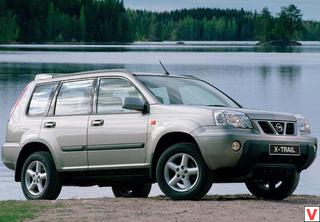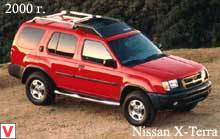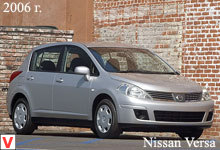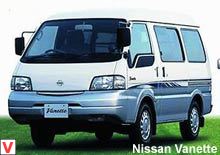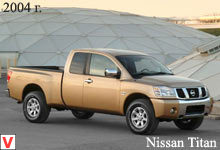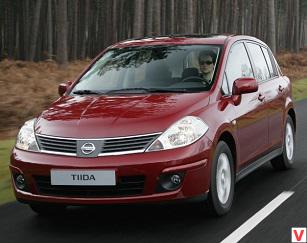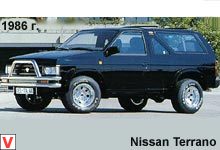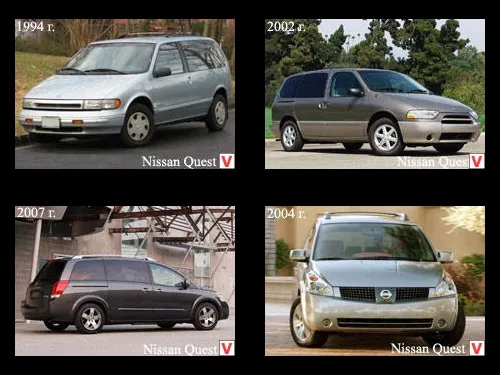
The Nissan Quest debuted at the 1992 North American International Auto Show in Detroit. The serial model saw the light in 1993. The first generation was almost an exact replica of the American Mercury Villager developed by Ford. Slightly modified headlights and grille were one of the only differences by which cars could be distinguished from each other. As for the mechanical part, Nissan used engines of its own production. The main leading force of Quest was the V6 engine with a capacity of 2960 cm³ and a power of 151 hp. Since 1996, front airbags for the driver and passenger have come standard.
The public accepted the model calmly, but generally positive. As the next family-economy car - roomy and functional. At the time of her debut, the model looked quite modern, but the years went by and she, naturally, was stylistically outdated. In the late 90s, Ford finally abandoned the production of Villager, because the company was not satisfied with the low level of sales of the model. As a result, the development of a second generation minivan completely fell on the shoulders of the Nissan.
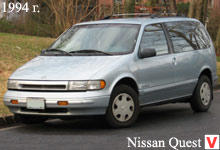
The second generation Nissan Quest came out in 1999. The car turned out much more dynamic and attractive than its predecessor, and the low angle of the windshield gave the model excellent aerodynamic performance. In 2001 there was a small restyling of the model, which slightly changed its appearance. Quest noticeably added in length, which allowed to increase the space of the luggage compartment. The third generation of these full-size minivans began selling in the fall of 2003. The engineers had the task to maximize the size of the car. Therefore, the width of the wheelbase has increased significantly.
However, with solid dimensions (5185x1971x1826 mm), the car does not look bulky at all. Design Nissan Quest III was a complete contradiction. His appearance was both praised and mercilessly criticized. The instrument panel, located in the center of the front panel, became a particular subject of controversy. The average European driver, such an arrangement of devices is very unusual. Inside, three rows of seats. Second row chairs are made as large as possible.
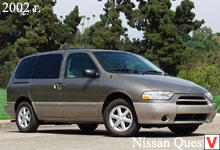
The seats of the third row are slightly raised and also quite comfortable. Gamma modifications - Base, S, SL and SE. Trunk volume - 926 liters with all installed seats. If you fold the third row of seats, then the amount of usable space will increase to 2418 (SE version) or to 2498 (version S and SL). Well, if you add up the second row seats, then the luggage compartment volume will be 4072 liters (in the S and SL - 4211 liters).
In addition, the machine is able to tow a trailer weighing 1558 kg. Among the design features of cars of these years, the original Skyview roof with a longitudinal 3-section glazing and the ability to control the degree of interior lighting stand out. The equipment list includes ABS + EBD, BA, cruise control, full electric, a transformable saloon with the possibility of free planning, dual-zone climate control, navigation and DVD systems with one or two displays in the front and rear parts of the cabin, front radar with adaptive cruise control.
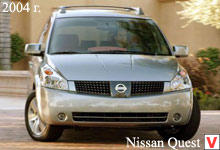
The VQ35DE engine with a volume of 3.5 liters V6 24V (240 hp, 348 Nm) is aggregated with either a 4-speed (Base and S) or 5-speed (SL and SE) "automatic". Production of Nissan Quest started in the city of Canton (Mississippi). In 2007, an updated version of the Nissan Quest III appeared on the market, which features a redesigned interior, an updated design and many modern options. Working on the exterior, the designers managed to create a modern look and not to scare away conservative clients. New grille with chrome inserts and chrome door handles gave the minivan solidity, and the modified angular front bumper added a touch of aggressiveness. Slightly changed front and rear optics.
The main innovation in the cabin is the dashboard, which has been completely redesigned to provide a more traditional arrangement of levers than in the previous version. Large sensors are now located right in front of the driver. The shift lever for the standard 5-speed automatic transmission is located in the center of the dashboard, below the finalized, easily accessible 7-inch color information screen mounted in the center, which displays information from the audio system, navigation system, or “parking” camera built into the rear bumper.
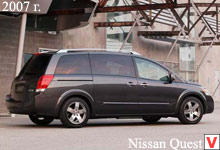
Side sliding doors can now be opened or closed remotely, and in order not to get your hands dirty in inclement weather, a similar device is provided for the rear door. Regardless of the configuration Nissan Quest 2007 is equipped with a brake system with ventilated discs and ABS and EBD. Also, to help the driver designed traction control systems (TCS) and dynamic control (VDC). Already in the basic configuration, the car is equipped with front airbags and inflatable curtains to protect passengers of the first and second rows from side impacts or coups.
